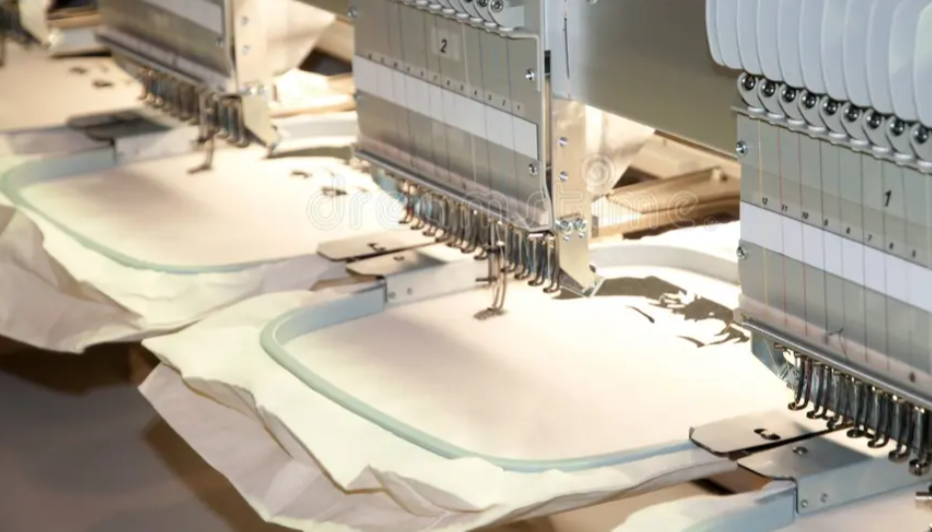
Embroidery machine maintenance daily and weekly.
Proper and consistent maintenance is crucial for the longevity and performance of a commercial embroidery machine. Neglecting these tasks can lead to poor stitch quality, frequent thread breaks, and costly repairs. While every machine has specific manufacturer guidelines, here is a general breakdown of daily and weekly maintenance tasks.
buy LB5 here:
LB5 Embroidery Machine Spray Lubricant
Daily Maintenance
These tasks should be performed at the start or end of every workday to clear out debris and ensure smooth operation.
Clean the Bobbin Area and Rotary Hook: This is the most critical daily task. Lint and thread debris build up quickly in this area and can cause significant problems with tension and stitch quality.
Turn off and unplug the machine.
Remove the bobbin case and bobbin.
Use a small brush to sweep away all lint and dust from the bobbin case and the rotary hook area. A small brush is better than compressed air, which can push debris further into the machine.
Carefully inspect the bobbin case and the rotary hook for any nicks or burrs, which can shred thread and cause breaks.
Lubricate the Rotary Hook: Oiling the rotary hook is essential for reducing friction and wear.
Apply a single drop of a high-quality, machine-specific oil to the rotary hook race.
Check your machine’s manual for the exact location and frequency (some machines may need oiling every 4-8 hours of use).
Wipe Down the Machine: Use a soft cloth to wipe down the exterior of the machine, including the pantograph arms, the thread take-up levers, and the tension discs. This prevents dust and lint from being drawn into the machine’s inner workings.
Check Needles: A dull or bent needle is a leading cause of thread breaks and poor stitch quality.
Visually inspect each needle for wear, burrs, or a bent tip.
Run your finger or a business card over the needle tip to check for any roughness.
Replace any needle that shows signs of wear or has been in use for a long time (a general rule of thumb is to replace needles after every 8-10 hours of stitching).
Weekly Maintenance
These tasks involve a more thorough cleaning and inspection of the machine’s key components.
Deep Clean the Machine: Go beyond the daily cleaning by removing the needle plate and cleaning the area underneath it.
Turn off and unplug the machine.
Use a small brush or a vacuum to remove all lint and debris from the feed dogs and the entire area under the needle plate.
Carefully inspect the needle plate for any nicks or burrs.
Oil Other Moving Parts: Check your machine’s manual for a lubrication schedule for other moving parts, such as the needle bars, guide rails, and other specified oiling points.
Apply a single drop of oil to these points as directed.
Inspect and Tighten Screws: The constant vibrations of a commercial machine can cause screws and fasteners to loosen over time.
Use a screwdriver to check and gently tighten any loose screws, especially on the needle bar, presser foot, and thread guides.
Check Bobbin Winder: Ensure that your bobbin winder is working correctly and that it is winding bobbins evenly and with proper tension.
Clean Thread Path: Use compressed air or a fine brush to clean the thread path from the top of the machine (thread stand) all the way down to the needle. Pay special attention to the tension discs and thread guides.
Test and Adjust Thread Tension: After cleaning, it’s a good practice to run a quick tension test to ensure both the top and bobbin threads are balanced and working together properly.
General Tips
Consult Your Manual: The machine’s user manual is your most important resource. It provides specific instructions and diagrams for oiling points and maintenance schedules that are unique to your model.
Use the Right Supplies: Always use the type of oil, grease, and cleaning tools recommended by your machine’s manufacturer.
Document Everything: Keep a logbook of your daily and weekly maintenance. This can help you track when parts were oiled, when needles were changed, and if any recurring issues are happening.
Use High-Quality Consumables: Investing in high-quality thread, bobbins, and needles can significantly reduce the amount of maintenance and troubleshooting required.
Know When to Call a Technician: While routine maintenance is essential, you should not attempt complex repairs or adjustments to internal timing or electrical components. Have a professional technician perform a more thorough service and tune-up at least once a year, or more frequently if your machine is under heavy use.
- #embroiderymachinemaintenance #embroiderymachineoil #embroiderymaintenance #machineoil #embroideryoperator
